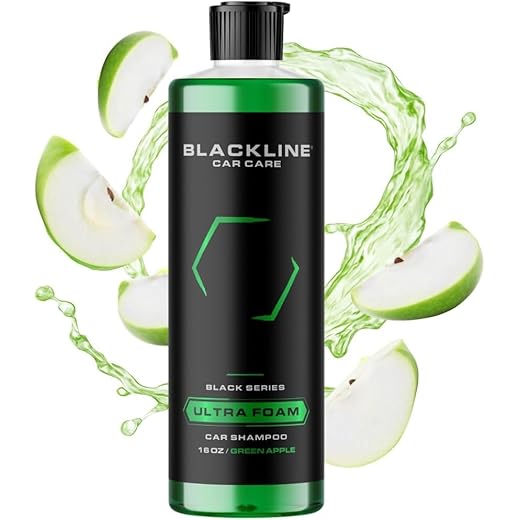

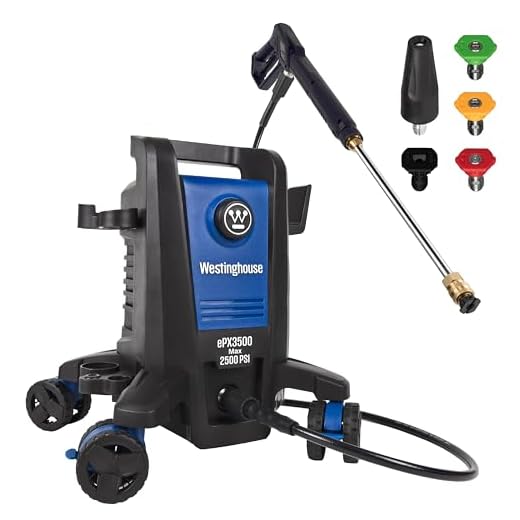

For optimal results, I recommend using a cleaning fluid ratio of about 1:10 with water for most tasks. This provides a balanced mix that effectively removes dirt and grime without causing damage to surfaces. Adjustments may be needed depending on the level of soiling and the specific formulation of the cleaner.
It’s also crucial to always consult the manufacturer’s guidelines for your unit, as certain models may have specific recommendations regarding the concentration of detergents. In general, sticking to the specified amounts ensures longevity and proper function of the equipment.
If you’re dealing with stubborn stains or heavy build-up, consider applying a stronger solution directly onto the affected area before using the washing device. Allowing the mixture to sit for a few minutes can enhance its cleaning effectiveness. Remember, using too much cleaning agent can lead to excess foam and may result in decreased performance.
Additionally, be mindful of the type of surface you are cleaning. Some materials may require less aggressive cleaning agents or different ratios, so always do a patch test if you’re uncertain. By adhering to these guidelines, you will achieve efficient cleaning outcomes while maintaining your equipment’s integrity.
Understanding Soap Types for Pressure Washing
Choosing the right cleaning agent is critical for effective outdoor cleaning. I recommend selecting a detergent formulated specifically for high-pressure cleaning devices. Most often, these come in three types: general purpose, heavy-duty, and bio-degradable options.
General Purpose Detergents
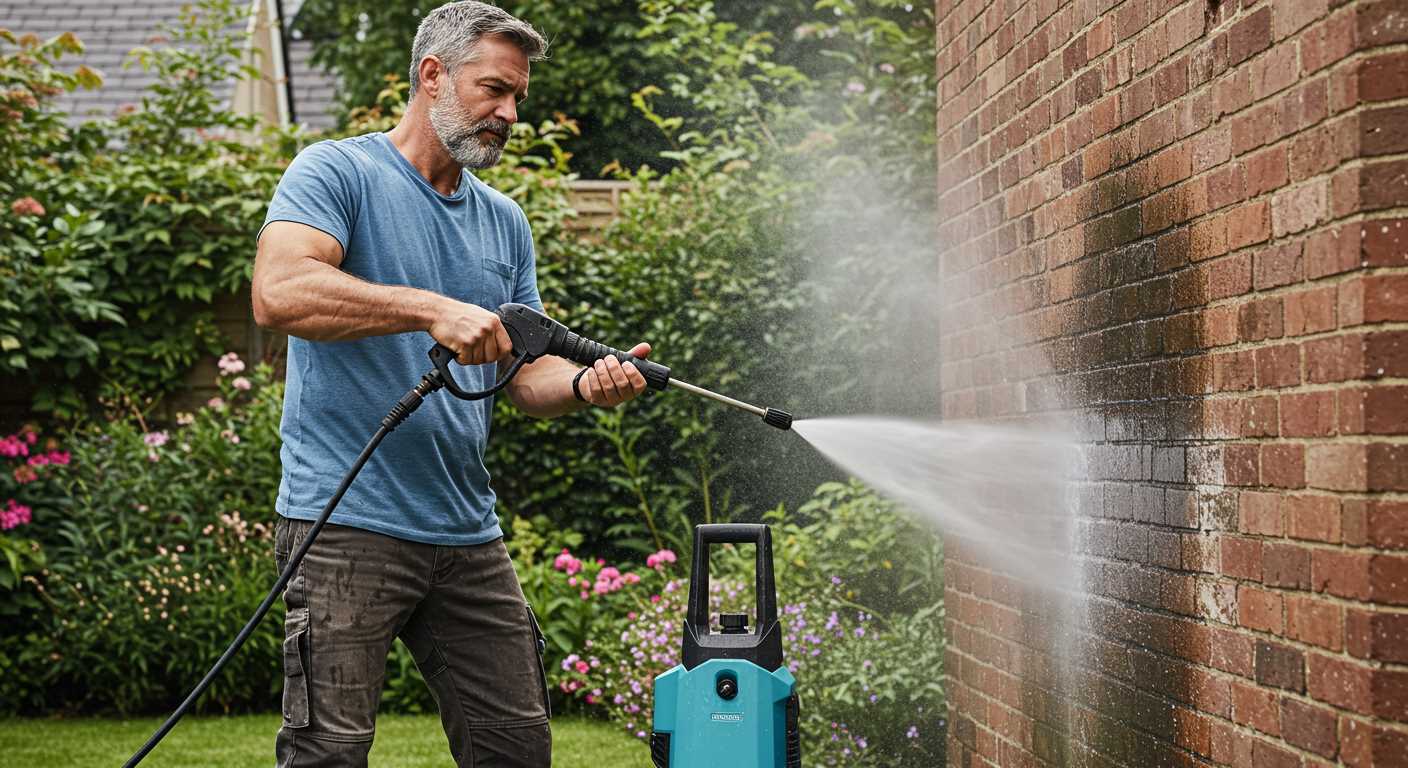
These solutions are great for light tasks such as washing cars or cleaning patio furniture. They efficiently remove dirt, grime, and mild stains without damaging surfaces. Look for products that are safe for use on various materials, including painted surfaces and plastic.
Heavy-Duty Detergents
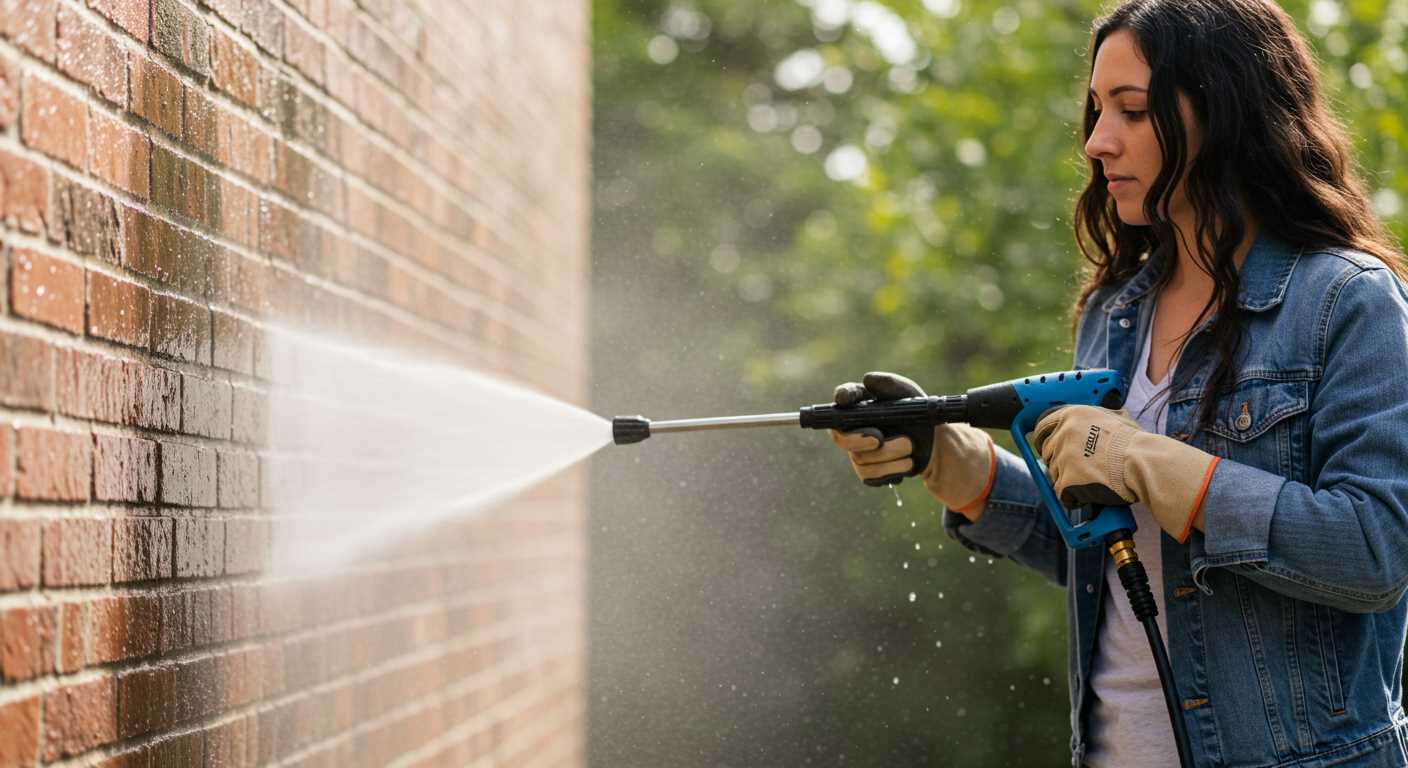
For more challenging tasks like removing grease from driveways or mildew from decking, a heavy-duty formulation will deliver superior results. These detergents contain stronger surfactants and solvents, making them more effective against tough stains. Always verify compatibility with your equipment to avoid potential damage.
Bio-degradable agents have gained popularity for their eco-friendly nature. They are equally effective while being less harmful to the environment, making them a great choice for conscientious users. Always read product labels to ensure you’re getting a suitable cleaner, and follow any usage recommendations for optimal performance.
Determining the dilution ratio for soap solutions
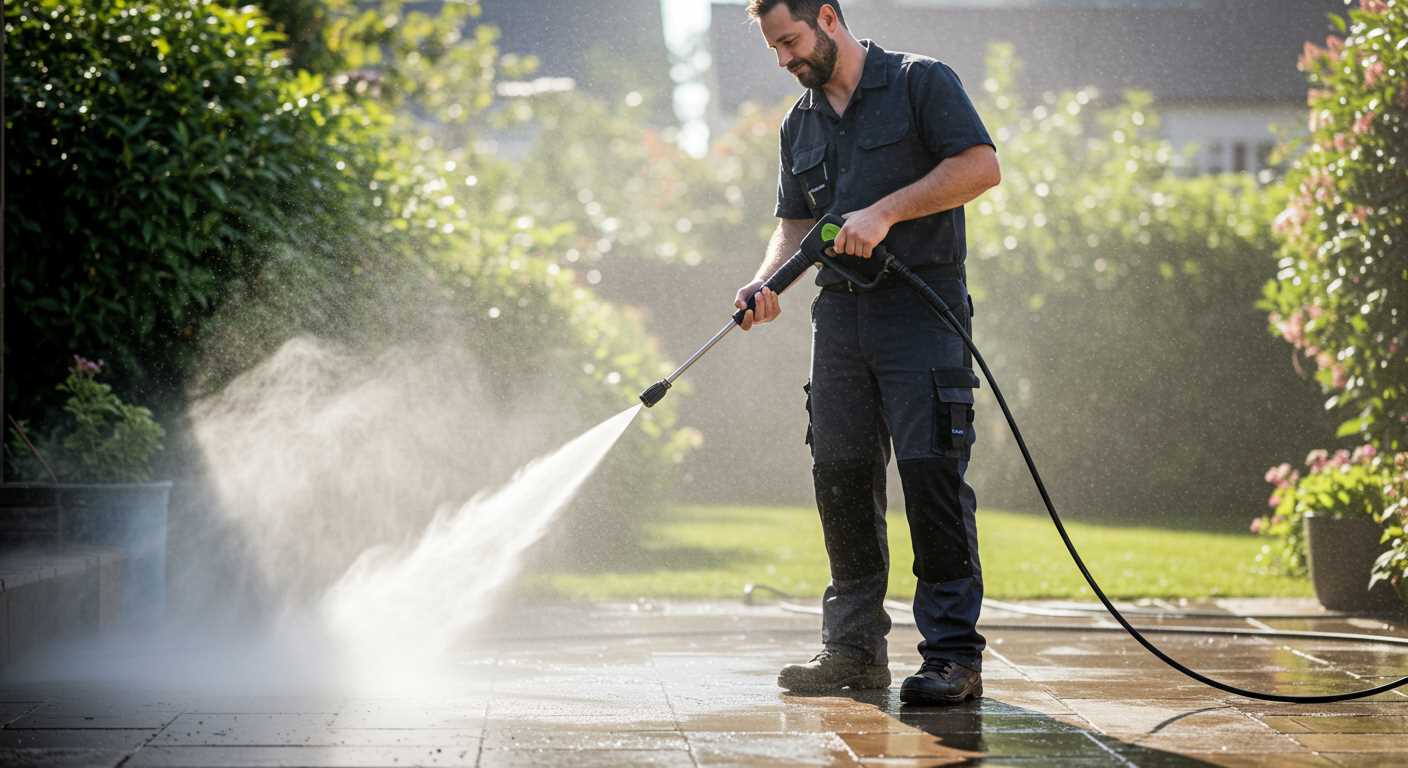
The most effective dilution ratio typically ranges from 1:10 to 1:20, depending on the specific formulation of the cleaning agent. For concentrated formulations, start with a mix of one part cleaner to ten parts water; for less concentrated varieties, a ratio of one part to twenty parts may suffice.
Testing the effectiveness
It’s advisable to conduct a small test on a discreet surface before applying the solution widely. This ensures that the cleaning agent adequately lifts grime without damaging the underlying material. If the result is unsatisfactory, gradually increase the concentration.
Adjusting based on application
Factors such as surface type, level of dirt, and water temperature can influence the optimal dilution. For greasy surfaces, a stronger mixture, closer to 1:5, may be more effective. Conversely, delicate materials might require further dilution. Thus, adjustments based on real-world conditions are crucial for achieving desired results.
Examining the pressure washer model’s soap capacity
Each model comes with a specific reservoir for cleaning solutions, often measured in litres. Knowing this capacity is fundamental for optimal use. For most residential units, the soap tank typically holds between 0.5 and 1.5 litres. For professional-grade machines, this can increase significantly, sometimes exceeding 3 litres.
Here are examples of various brands with their respective tank sizes:
| Brand | Model | Tank Capacity (litres) |
|---|---|---|
| Brand A | Model X | 0.75 |
| Brand B | Model Y | 1.5 |
| Brand C | Model Z | 3.0 |
When using a machine with a smaller tank, regular refills may be necessary, particularly during extensive tasks. Conversely, larger tanks reduce interruptions, allowing for longer continuous operations. I recommend checking the manufacturer’s specifications for exact volumes and ensuring that the tank is adequately filled, but not overfilled, to prevent spillage and operational issues.
Another vital aspect is understanding the pump’s ability to mix the solution efficiently. Some models come equipped with adjustable nozzles to control the flow rate of the cleaning agent. If you’re dealing with tougher stains, selecting a model with a high capacity for the cleaning agent can be advantageous.
Ultimately, knowing the capacity of your selected equipment allows for better planning and maximises cleaning efficiency, saving time and effort in large-scale applications.
Calculating soap amounts based on cleaning area
To accurately assess the quantity of detergents needed for a specific cleaning area, follow these guidelines:
1. Measure the surface area
Determine the total area that requires cleaning. For flat surfaces, multiply the length by the width. For walls or vertical surfaces, consider the height and width. Use these formulas:
- For rectangles: Area = Length × Width
- For walls: Area = Height × Width
- For circular surfaces: Area = π × (Radius^2)
2. Recommended dilution ratios
Once the area is established, apply the appropriate dilution ratio for your chosen cleaning solution. Here are typical values:
- Light dirt: 1 part cleaning agent to 8 parts water
- Moderate dirt: 1 part cleaning agent to 4 parts water
- Heavy dirt: 1 part cleaning agent to 2 parts water
3. Calculate the total volume needed
With the area and dilution ratio, you can derive the total volume of cleaning solution. Assuming one gallon (or 4.75 litres) covers approximately 100 square feet (9.29 square metres), you can follow this calculation:
- For light dirt: Required volume = (Total Area ÷ 100) × (1/8)
- For moderate dirt: Required volume = (Total Area ÷ 100) × (1/4)
- For heavy dirt: Required volume = (Total Area ÷ 100) × (1/2)
Always monitor the application to gauge performance and adjust the mixture if necessary. This ensures optimal results tailored to the specific condition of the surfaces being cleaned.
Identifying Residue Removal and Rinsing Techniques
For optimal elimination of cleaning residues, it’s crucial to initiate with a thorough rinse using clean water before applying any cleaning agents. I recommend utilising a wide-angle nozzle for this initial pass, ensuring the surface is saturated without risking damage.
Rinsing Methodology
After applying the cleaning solution, let it dwell for a few minutes to penetrate and lift grime. Following this, switch to a high-pressure tip to effectively remove any residual product. Aim the nozzle at an angle to enhance the force of the water stream and guarantee comprehensive rinsing.
Utilising a dual-tank system, where one tank holds plain water and the other holds the cleaning mixture, can significantly streamline the process. This allows for quick transitions between application and rinsing, minimising the chances of residue buildup.
Surface Considerations
Different surfaces require tailored approaches. For delicate materials like wood, a gentle rinse is necessary, while concrete can handle a stronger stream. Always adjust the nozzle and flow rate to suit the material to avoid damage. It’s advisable to conduct a small test area first to gauge the effectiveness of the rinsing technique.
Pay attention to the weather conditions too; a sunny day can cause cleaning agents to dry too quickly, leading to spotty residue. In such cases, it’s best to work in shaded areas or during cooler parts of the day to facilitate effective rinsing.
Lastly, maintain a constant movement while rinsing. Holding the nozzle in one spot can cause streaks or residue to set, which defeats the purpose of the cleaning process. A consistent sweeping motion ensures an even clean.
Adjusting detergent levels for different cleaning tasks
For light cleaning tasks, such as washing cars or outdoor furniture, a dilution of 1:10 is typically sufficient. This means one part detergent to ten parts water. For moderate cleaning, like pathways or driveways, a 1:5 ratio enhances the effectiveness. Heavy-duty applications, especially on garages or heavily soiled areas, may require a 1:2 mixture to break down tough grime.
Always test a small area first, particularly on delicate surfaces, to avoid damage. Adjust concentrations based on experience: if the cleaning solution isn’t effective, increase the concentration slightly. Conversely, if residue remains after rinsing, consider diluting your mixture and ensure adequate rinsing techniques are applied.
Keep in mind that environmental factors such as humidity and temperature can affect cleaning efficacy. High humidity may necessitate more concentrated solutions to achieve optimal results, while low temperatures can slow drying times, potentially impacting residue perceptions. Adjust accordingly based on these conditions and specific demands of each project.
Specific formulations may warrant particular settings on various machines. Consult your manufacturer’s guidelines for precise recommendations regarding nozzle types and pressure settings, as these can further fine-tune the application of cleaning agents. This ensures you achieve the desired outcomes efficiently and protects surface materials from harm.
Important safety considerations when using soap
Protective gear is a must. Always wear safety goggles, gloves, and non-slip footwear when operating cleaning equipment. This prevents direct contact with harsh detergents and accidental slips due to wet surfaces.
Ensure proper ventilation in your workspace. If using the machine indoors, open windows or use fans to circulate air. Some cleaning agents emit fumes that can be harmful when inhaled.
Be cautious with sensitive surfaces. Prior to application, test the cleaning solution on a small, inconspicuous area, especially on painted or delicate materials. This helps to prevent damage.
Store chemicals safely. Follow the manufacturer’s guidelines for storage and disposal. Keep cleaning agents away from children and pets to avoid accidental ingestion or contact.
Monitor surroundings. Be aware of others in the vicinity when activating equipment. The force of the spray combined with detergents can cause unintended injury if someone is too close.
Always read product labels. Understanding the contents and hazards associated with the cleaning agents used is crucial for safe operation.
- Use appropriate dilution ratios as recommended to minimise risks.
- Rinse surfaces thoroughly after cleaning to eliminate any residue.
- Consider environmental impact; avoid using cleaning agents that are harmful to local wildlife or waterways.
By adhering to these guidelines, you can enhance safety during the cleaning process while effectively managing detergents. Staying informed leads to better practices and improves the overall experience.


